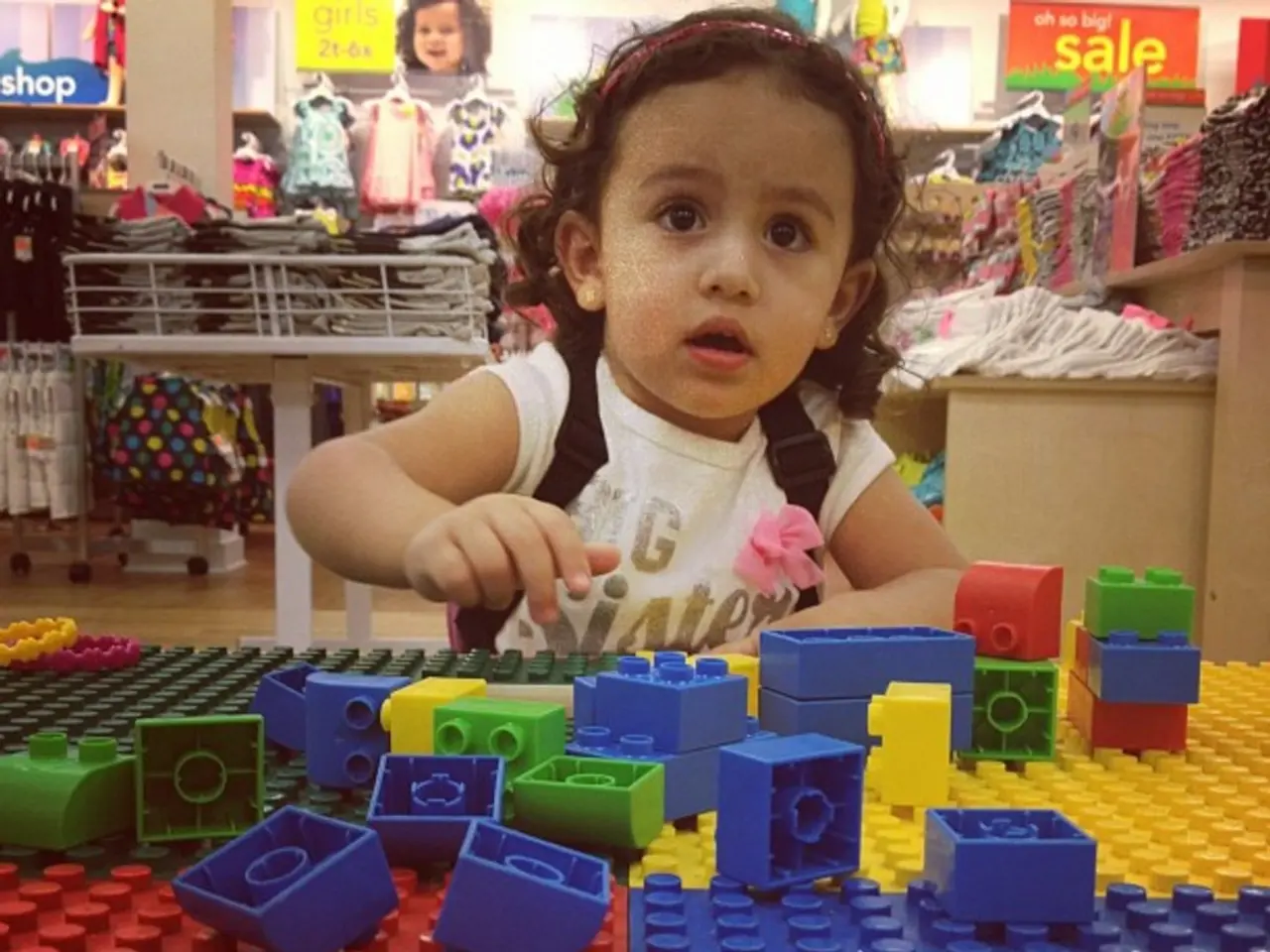Handcrafted Wooden Puzzle, Embellished with Fabric
In the world of DIY crafts, creating a wooden block puzzle for kids using Mod Podge can be an exciting and rewarding project. By following a few essential tips, you can design a visually appealing and challenging puzzle tailored to the child's skill level.
When selecting fabrics, it is advisable to choose good-quality cotton or quilting fabric for its excellent adhesion with Mod Podge and durability. Opt for fabrics with varied colours and patterns, but ensure they are not too complicated to avoid frustrating younger children. For older kids, consider using smaller, detailed prints or similar colours to increase the puzzle's difficulty.
To make the puzzle more intriguing, select fabrics with subtle or repeating patterns rather than distinct images. Vary the fabric placement on each block, so children must pay close attention to details when assembling them.
Essential tips for this craft include:
- Fabric choice: Opt for good-quality cotton or quilting fabric, which adheres well with Mod Podge and holds up to handling.
- Pattern complexity: Start with simple, bold patterns for younger kids; for older children, use smaller, detailed prints or similar colours to increase difficulty.
- Cutting fabric: Cut fabric pieces precisely to fit the wooden block sides or faces, ideally with some overlap to seal edges with Mod Podge.
- Adhering fabric: Apply a medium layer of Mod Podge to the wooden block, smooth the fabric over it carefully to avoid bubbles, and let it dry fully (about 15-20 minutes) before applying a top coat of Mod Podge for sealing.
- Surface prep: Ensure the wood blocks are smooth and clean before starting for best results.
- Extra challenge: Use multiple blocks to create an image puzzle, mixing fabric patterns or images that only align correctly when the blocks are in the right order.
Investing in good brushes for Mod Podge application helps achieve a smooth finish without wrinkles or bubbles.
While there are no detailed fabric-specific suggestions, these best practices are standard for Mod Podge decoupage on wood and fabric craft projects. The completed picture uses the same layout of blocks for each design, and a marker pen was used to draw an edge line around the perimeter of each puzzle.
The puzzles were given to a 21-month-old child, but, as of now, the child is not yet able to do the puzzle. However, the child has enjoyed stacking and knocking down the puzzles, and the puzzles can still be tricky due to the chosen fabric. Several fabrics used in the puzzle have designs where the animals are facing in various directions.
The child has had the puzzles for several months, and the puzzles, made from Fabric Mod Podge, have held up well despite the child's playful exploration. Although the puzzles may not be solved yet, they provide a fun and engaging activity for both the child and the parent, fostering creativity and problem-solving skills.
- For a home-and-garden makeover, consider incorporating wooden block puzzles made with Mod Podge as part of a lifestyle change inspiring creativity and learning.
- To extend the home-and-garden appeal of Mod Podge wood puzzles, choose wildlife-themed fabrics with various directional animal designs for added visual interest.





